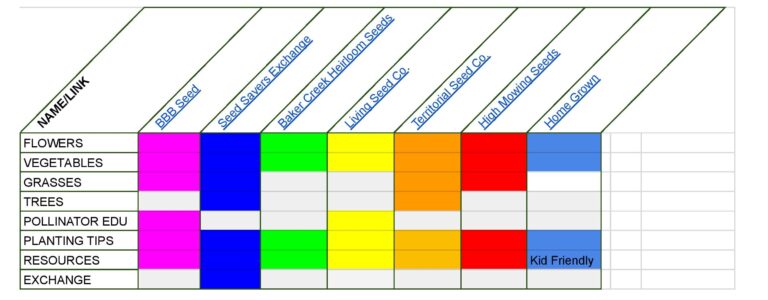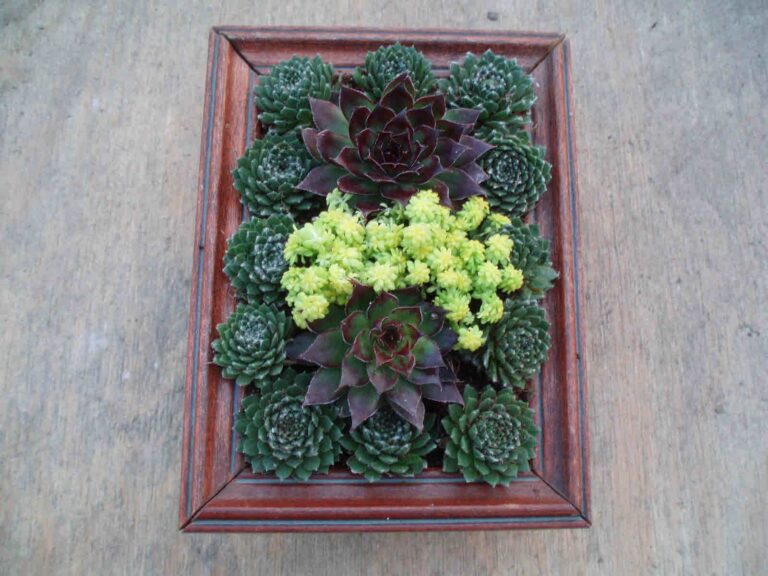15 Container Gardening Mistakes An Idiot Can Avoid

Gardening can be complex but that’s why you’re here. We break down 15 common container gardening mistakes and how to avoid them. From watering too much, not fertilizing enough, to picking the wrong container, we look at the science behind container gardening mistakes. Then, we tell you how to fix them.
Who Should Try Container Gardening?
There are many people who do container gardening. Any person who has a limited amount of space, can take advantage of container vegetable gardening to augment their groceries. Some gardeners want to grow herbs to naturally spice up their cooking. While others may want to grow flowers to beautify their patio. The most common people who try container gardening are:
- Older or disabled adults who are not able to care for an entire yard.
- People with small patios or balconies in a high rise apartment or studio.
- People with soil problems or limited space.
- Lazy people or people who don’t have much time to spare.
Why Do Container Gardens Often Fail?
There are many reasons that gardens fail but, it is easier to think about what makes plants thrive. A plant needs water, carbon dioxide, and sunlight to successfully photosynthesize. According to Livescience, this is the process that turns these three elements into the plant’s food, and oxygen for us. So, it seems like container gardening would be easy with only these three things, but there are other considerations. Photosynthesis does not provide the vitamins that a plant needs. Luckily, we outline 15 common container gardening mistakes and how to fix them below.
1. Too Much Water
The first and most common container gardening mistake is too much water. Yes, plants need water to produce their own food. But, if I throw you in a pool and hold you down, you cannot breathe. Roots need access to carbon dioxide in the soil which they cannot get if there is too much water. In addition, they can rot like any other organic matter left in water too long.
2. Watering The Leaves
Many people turn on a sprinkler and let it run all afternoon. In the evening, they go out and turn off the sprinkler. Night moves in and the leaves are still wet. This is the best cold, clammy condition for fungus or mold to grow on the plant leaves. Think of the dark, dank forest floor. A great place to find mushrooms! Too much water on the leaves, at the wrong time, can lead to mold and fungus problems.
3. Not Checking Soil Ph (A Very Common Container Gardening Mistake!)
A very common container gardening mistake is to avoid purchasing a Ph meter. Buy one from Nature Hills Nursery affiliate link here. The Ph in soils is measured on a scale from 1 to 14. The meter measures the acid or alkaline level in the soil. Most plants, but not all, prefer a acidic to neutral soil at 6.1 to 7 Ph on the scale. A plant’s ability to take up nutrients in the soil is optimal when the soil’s Ph level is in the plant’s preferred zone. Let’s say soil Ph out of zone is a tiny straw, we can barely drink our favorite smoothie with this tiny straw. But if a big super straw is the plant’s ideal Ph zone, it is able to get all the smoothie (nutrients) it wants. Well, you know what I mean.
How To Correct Soil Ph
Soil at 7 Ph is neutral. But, above 7 are alkaline soils. Below Ph 7 are acidic soils. Tomatoes which are an acidic fruit prefer a lower soil Ph at 6.0-6.5. The addition of lime (not the lime fruit, the powder) can help break up clay soils and make it less acidic. If soil is less than 6.0, it may need lime to lift the Ph. If the soil is alkaline, sulfur can help reduce the Ph in soils over 7, but be careful because it can also easily damage plants if you apply too much. Limey or chalky soils cannot feed plants. I wrote a post about Soil Ph here, if you want to learn more.
4. Not Fertilizing At The Right Time
You can avoid one common garden mistake by fertilizing at the right time. Some people don’t fertilize at all. Others think more fertilizer is the best, which can burn the plants. There are 17 nutrients that a plant needs. Of these, 14 are found in soil and the other 3 are from water and the air. Scientists have determined that, of the 14 soil nutrients, the 3 most important plant nutrients are nitrogen, phosphorus, and potassium. (Reference #1)
How Often Should I Fertilize My Garden?
Landscape plants usually do well with a balance of all 3 nutrients twice per year. Once in the spring, and after a hard freeze. They don’t usually need fertilizer in summer or fall. If the plants still look unhealthy, check everything on this list.
Vegetable plants, on the other hand, do well with a fertilizer a little higher in nitrogen every 4-6 weeks through their entire growing phase. Nitrogen is essential to produce protein which benefits the plant and the produce we eventually eat. Phosphorous helps plants store and use energy including photosynthesis. Potassium helps plants fight off disease.
5. Containers That Are Too Small
To grow healthy, plants need to get nutrients through their roots from the soil. A container that is too small does not let roots develop and spread naturally. There are other problems as well:
- Plants may try to grow out of the pot through the holes in the bottom and grow into the ground.
- The lack of air circulation does not allow leaves to dry out after watering which leads to fungus or mold.
- It’s more difficult to find produce on the plant when it is crowded in a pot.
- Pests can hide more easily when a pot is crowded.
6. Letting Plants Get Root Bound
Another common container gardening mistake, especially with perennials, is too many roots. Easy care plants are often neglected and continue to grow, even in poor conditions. Since plants take nutrients through their roots, plants often send out a mass of roots when it does not have regular feeding. This root bound plant may try to send roots through the bottom of the pot or up along the stem or edge seeking more nutrition. If it encounters barriers, it will eventually die from lack of nutrition.
7. Planting Shade-Loving and Sun-Worshipper Plants Together
Most plants love the sun since it helps photosynthesis. Some plants prefer cooler areas with indirect light. If you mix these two types of plants, you will always struggle with one or the other looking ill.
8. Using The Wrong Container
The container itself can cause container gardening mistakes. Terracotta pots allow water to seep out of soil through their porous walls which tends to dry out soil more quickly. Plants that like dry roots will do well in these pots, but a plant that wants moist soil will quickly suffer. By using a liner or plastic pot, water can be retained in the pot to help moisture-loving plants. Plants need trace minerals like copper and iron. If you use metal pots, some of these minerals will be leached into the soil. But if you use lead, watch out!
9. Failing To Inspect Plants For Pests Daily
This is the container gardening mistake I make most often. Pests can invade your plants quickly. Most bugs gestate in 2-7 days. You must check vegetable plants daily once they begin to mature and especially once they flower to put out fruit. If you do not, you may need to pull up whole plants. Never put pest infested plants in the compost bin. Organic pest controls rarely work without daily care. (Reference #2)
10. Putting Pebbles In The Bottom Of The Container
Putting pebbles in the bottom of a pot is a minor container gardening mistake, but easily avoided. The pebbles take up soil space which could be used by the plant to take up nutrients. Plants cannot take nitrogen from the air but instead plants use the soil. Let them have the entire container filled with soil.
(Side Note: 78% of the air we breathe in is nitrogen but we use oxygen instead of nitrogen because oxygen creates respiration more easily than nitrogen. Plants use carbon dioxide and nitrogen as building blocks for growth.)
11. No Holes In The Container
Holes in the container allow air into the soil. Aeration is important for other organisms beneficial to plants. Holes also allow water to drain. If there are no drainage holes in the container, the roots die.
12. Not Considering Your Outdoor Space
Typically, a small gardening space is used for container gardening. You may not be able to choose an ideal location. By not considering the space, you can damage plants. Do you get too much sun for shade-loving plants? Do you get too little, for sun-loving plants. Most plants need at least 6 hours of sun during the day.
13. Using Hazardous Materials For Containers
Always consider the materials you use for creating vegetable containers. As stated, most of the nutrients are taken from the soil in the container. Metal containers that have lead could leach into the soil.
Also, non-food grade plastics like styrofoam can leach carcinogens into soil. In fact, most plastics including those PET (Polyethylene terephthalate) bottles that water comes in are toxic in the heat. (You should never drink out of a plastic water bottle left in a hot car.) How hot does the sun get in your area? The plants need sun to grow, the sun is hot. Not a good mix. Since plastics have been linked to all kinds of health problems, I would avoid using plastic as vegetable growing containers. (Reference #3)
14. Not Pruning Your Container Garden
When I say pruning, I do not mean cutting back entire healthy limbs. However, cutting off dead or dying limbs, is beneficial. Also, if you find pests, you can snap off the leaves that have eggs. If your vegetable plant has a lot of baby fruit, you can pinch off new flower buds to send more nutrients to the vegetables instead of new fruit production.
15. Choosing The Wrong Plants
Some perennial vegetables do better in the garden than in a pot. It does not mean they cannot be grown in a large pot, but they would be better in their own garden bed. Asparagus, takes 2-3 years to become established. While, it is good to be able to control its spread, an asparagus bed means it has room to spread. Beans that vine are sometimes difficult to control or stake up. It is best to choose bush varieties for container gardening.
Conclusion
Avoid common container gardening mistakes by following this guide. Using a Ph meter, fertilizing, choosing the correct pots, and thinking of your gardening space, are all important. Keep these tips in mind and you will have some awesome salads. What is one new thing you learned from this article? Leave a comment below.

